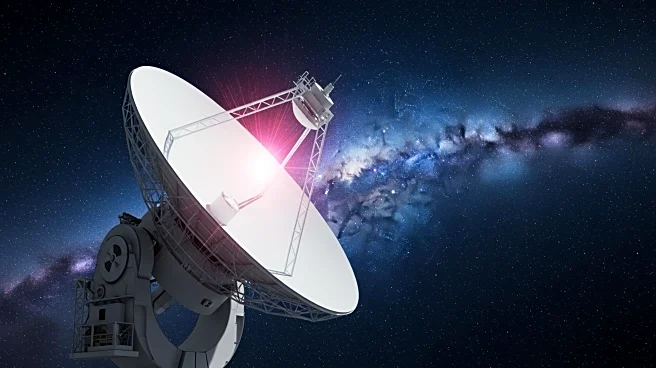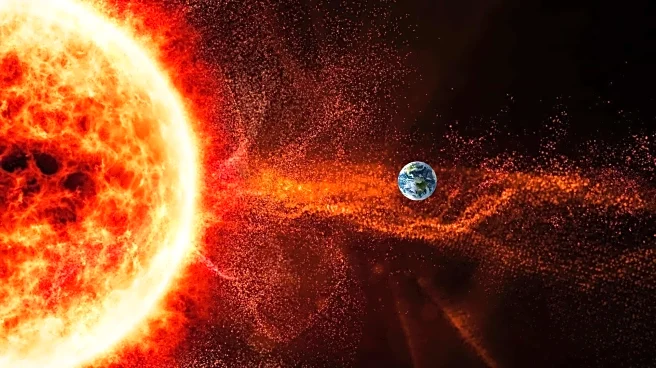What's Happening?
Astronomers have confirmed the first detection of a coronal mass ejection (CME) from a star other than the Sun. This discovery was made using the European Space Agency’s XMM-Newton space observatory and
the LOFAR radio telescope, which identified a short, intense radio signal indicative of stellar material escaping into space. The CME originated from a red dwarf star, traveling at an estimated 1,500 miles per second, a velocity sufficient to strip atmospheres from nearby planets. This finding advances the understanding of stellar space weather and its implications for exoplanetary habitability, particularly highlighting that intense CMEs around smaller stars may critically impact atmospheric retention.
Why It's Important?
The confirmation of a CME from a non-solar star marks a significant milestone in astrophysics, expanding the understanding of space weather beyond our solar system. This discovery has implications for the study of exoplanetary environments, as frequent and intense CMEs could affect the habitability of planets orbiting red dwarf stars. The ability to detect CMEs on other stars opens new avenues for research into stellar dynamics and the potential for life on exoplanets. It also underscores the importance of collaborative efforts in astronomy, utilizing multiple observatories to achieve groundbreaking results.
What's Next?
Researchers will continue to study the effects of CMEs on exoplanetary atmospheres, potentially leading to new insights into the conditions necessary for life beyond Earth. The discovery may prompt further observations using advanced telescopes and data processing techniques to identify CMEs on other stars. This could lead to a better understanding of the frequency and impact of stellar eruptions, informing models of planetary habitability. The findings may also drive technological advancements in radio astronomy and space observatories.












